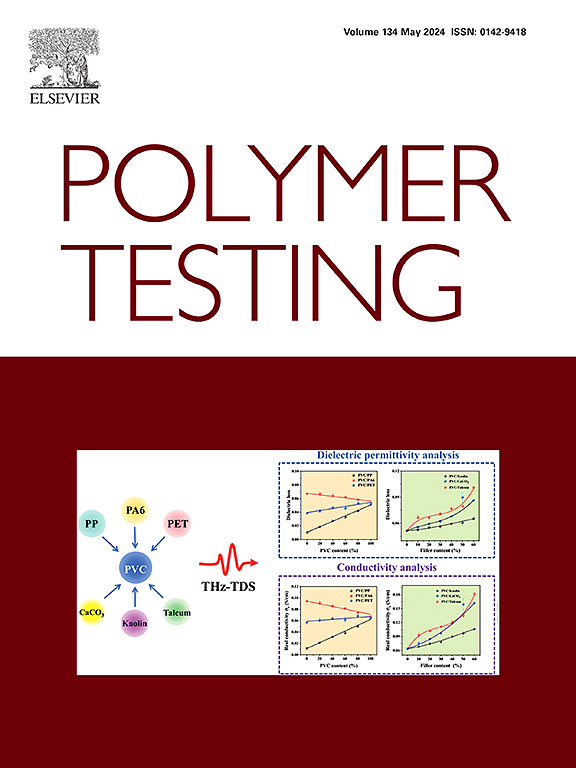Influence of different type of impermeable phase on the permeability of PLA films: Nanofillers versus crystalline phase
IF 5
2区 材料科学
Q1 MATERIALS SCIENCE, CHARACTERIZATION & TESTING
引用次数: 0
Abstract
Different amorphous PLA-based nanocomposites series allowing to vary the nanofiller shape from spherical (hydrophobic/hydrophilic silica, silver), to tubular (halloysites) and lamellar (montmorillonite, graphene) have been prepared for filler content up to 15 vol%. In parallel, a semi-crystalline PLA films series has been prepared by annealing amorphous PLA films from the glassy state with the aim to achieve different degree of crystallinity. The polymer chains mobility and the impermeable domains (either filler domains or crystalline phase) contained in each membrane have been characterized in detail. Membranes water vapor and oxygen permeability coefficients have been determined with the aim to evidence the governing factors for barrier properties. For nanocomposite membranes, the matrix microstructure and chain mobility were not significantly affected by the addition of fillers, so the barrier properties were mainly governed by the filler domains size and dispersion. For semi-crystalline membranes, the increase in crystallinity led to a decrease of the amorphous chains mobility (MAF) which was found to also influence the permeability. Theoretical models were used to describe the evolution of the experimental relative permeability and an equivalence diagram was proposed to have a direct comparison of the effect of fillers and crystallinity on the permeability.
求助全文
约1分钟内获得全文
求助全文
来源期刊

Polymer Testing
工程技术-材料科学:表征与测试
CiteScore
10.70
自引率
5.90%
发文量
328
审稿时长
44 days
期刊介绍:
Polymer Testing focuses on the testing, analysis and characterization of polymer materials, including both synthetic and natural or biobased polymers. Novel testing methods and the testing of novel polymeric materials in bulk, solution and dispersion is covered. In addition, we welcome the submission of the testing of polymeric materials for a wide range of applications and industrial products as well as nanoscale characterization.
The scope includes but is not limited to the following main topics:
Novel testing methods and Chemical analysis
• mechanical, thermal, electrical, chemical, imaging, spectroscopy, scattering and rheology
Physical properties and behaviour of novel polymer systems
• nanoscale properties, morphology, transport properties
Degradation and recycling of polymeric materials when combined with novel testing or characterization methods
• degradation, biodegradation, ageing and fire retardancy
Modelling and Simulation work will be only considered when it is linked to new or previously published experimental results.
 求助内容:
求助内容: 应助结果提醒方式:
应助结果提醒方式:


